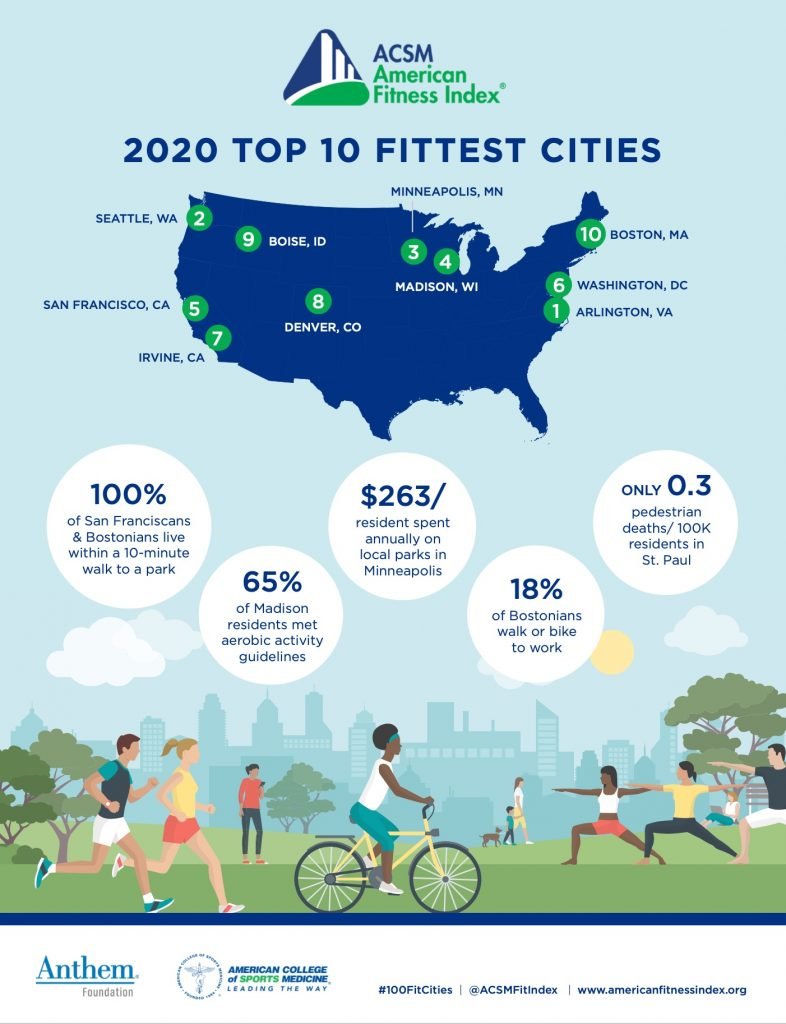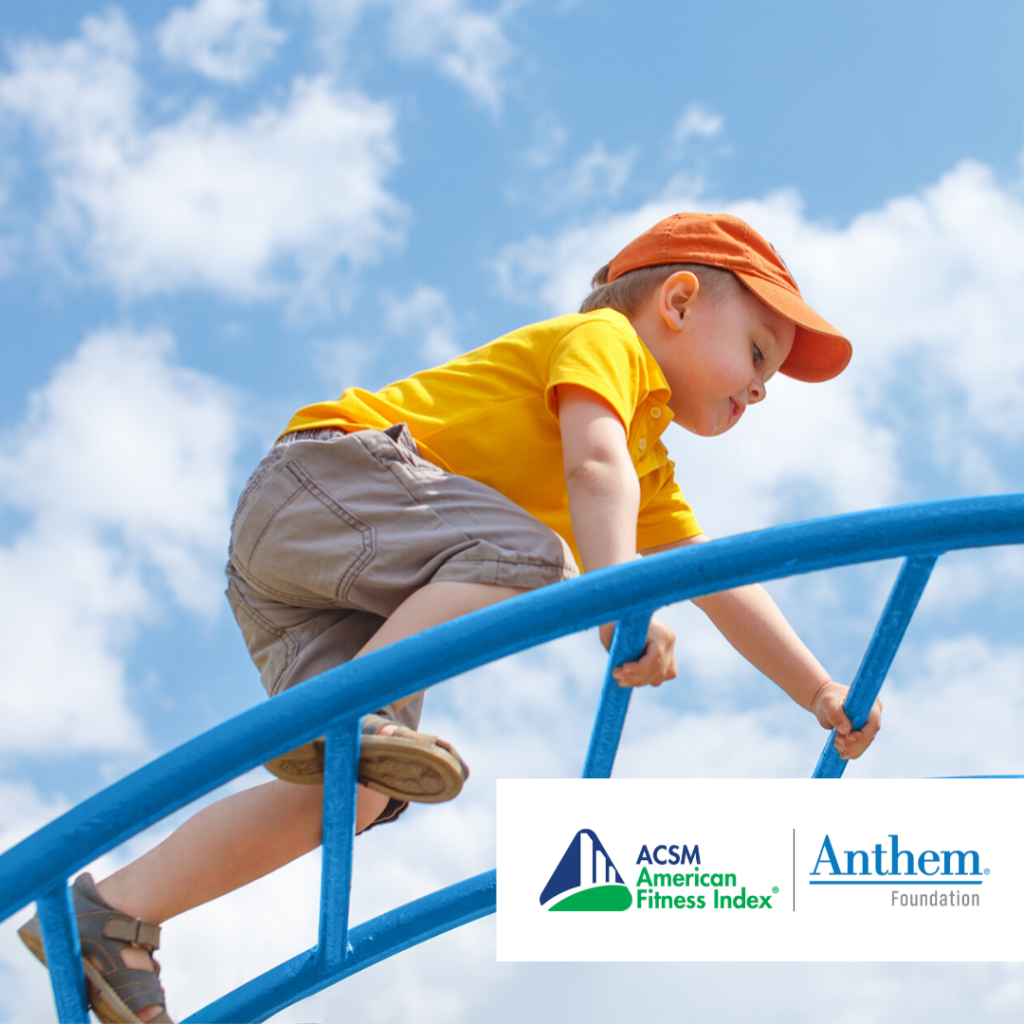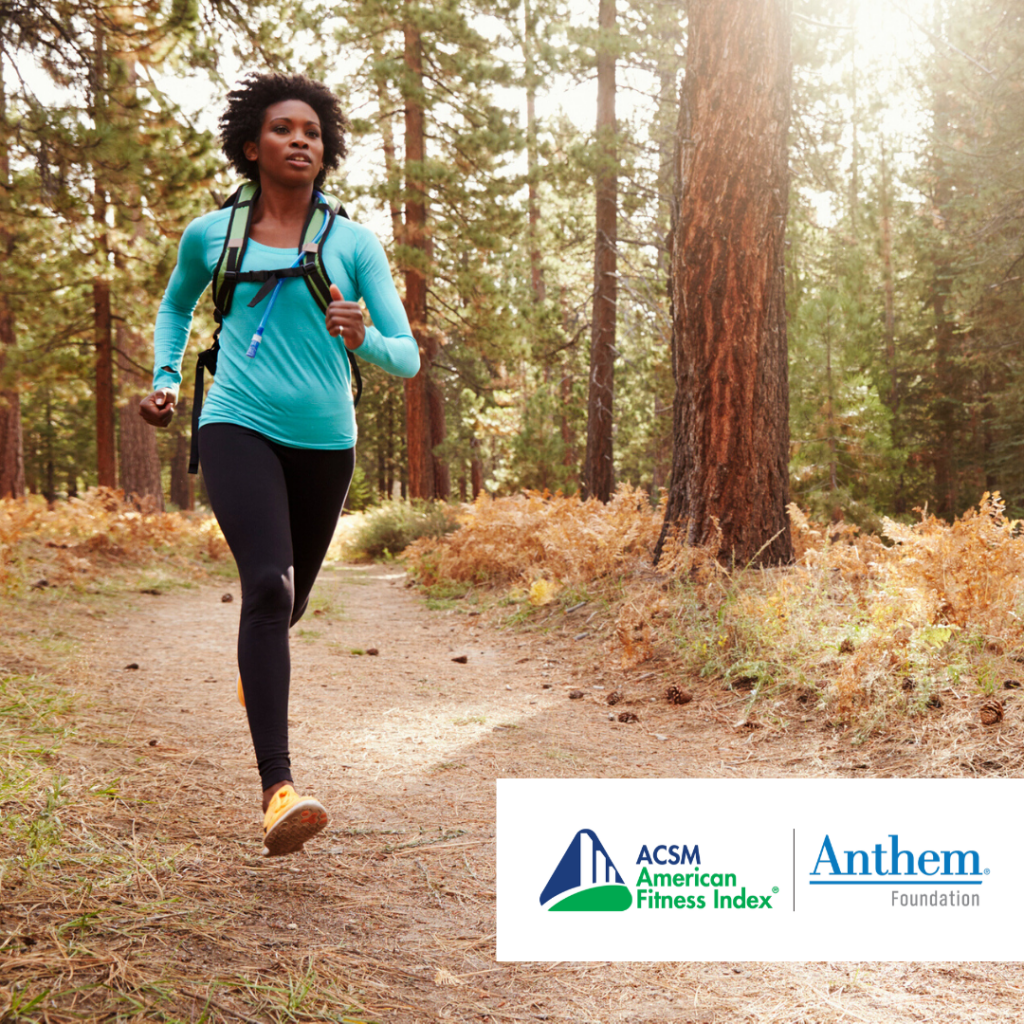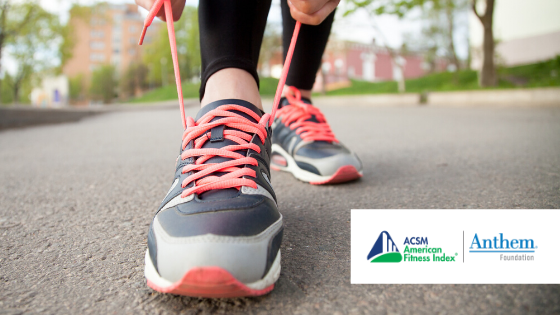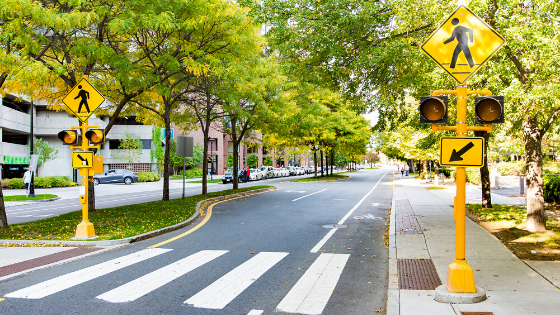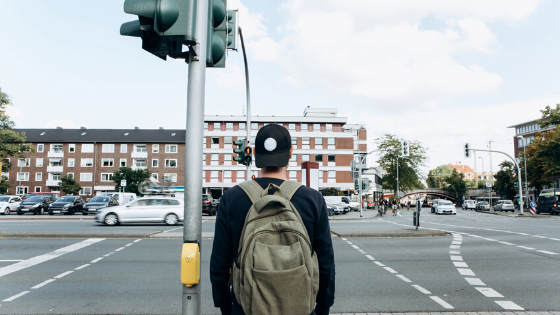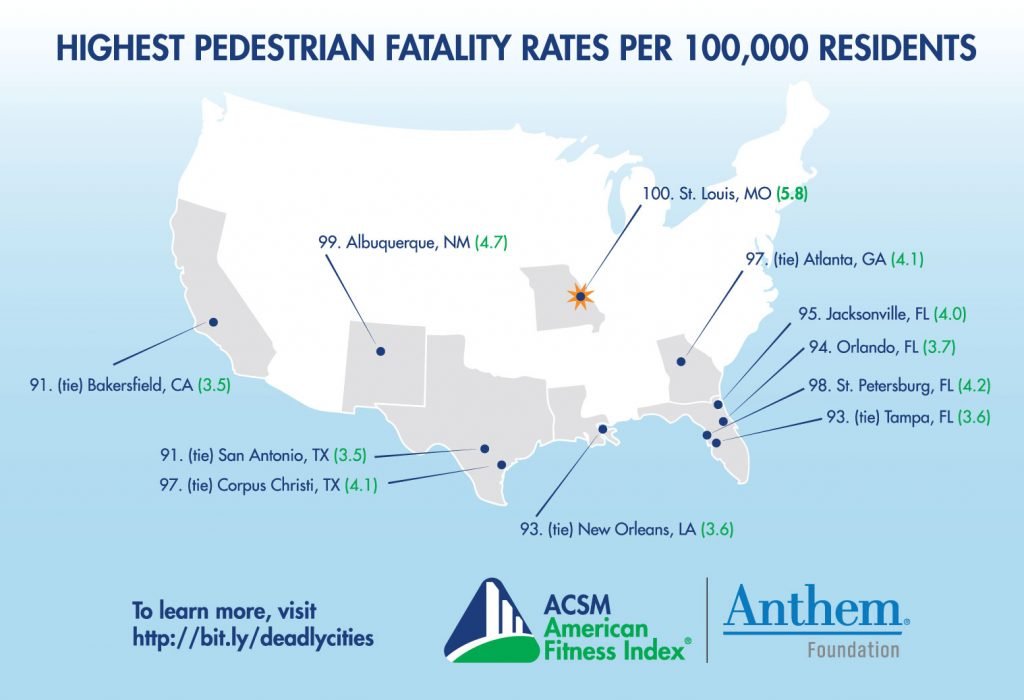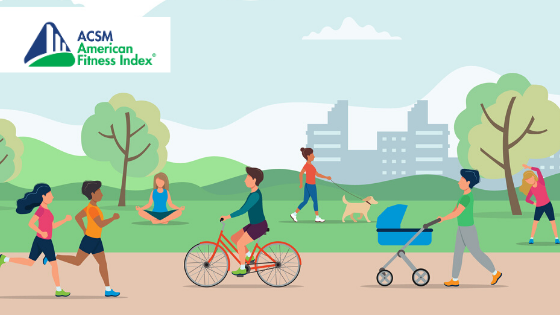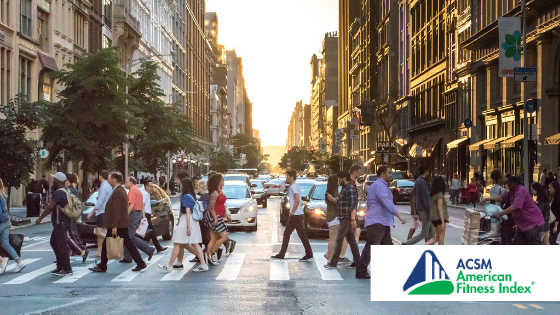La pandemia de COVID-19, la investigación subraya la importancia de la actividad física, la infraestructura en la batalla por la salud de la comunidad
Lisa Ramage (317) 352-3847 or Lramage@acsm.org (American College of Sports Medicine)
Mike Fulton (301) 651-2508 or MikeF@asheragency.com (Asher Agency)
Leslie Porras (202) 508-7891 or Leslie.Porras@anthem.com (Anthem Foundation)
Indianapolis (14 de julio, 2020) – Arlington, Virginia, ha sido nombrada “la ciudad más en forma de Estados Unidos” en el ranking anual American Fitness Index® publicado por el American College of Sports Medicine (ACSM) y Anthem Foundation, el brazo filantrópico de Anthem, Inc.
El ACSM/Anthem Fitness basado en la ciencia evaluó las 100 ciudades más grandes de los Estados Unidos utilizando 33 comportamientos de salud, enfermedades crónicas e indicadores de infraestructura comunitaria. Seattle, Wash.; Minneapolis, Minn.; Madison, Wis.; San Francisco, Calif.; Washington DC.; Irvine, Calif.; Denver, Colo.; Boise, Idaho; y Boston, Mass., completan las 10 ciudades más en forma. Boston hace su primera aparición en el Top 10 este año. Puede acceder a los rankings y puntajes completos, el informe resumido, la herramienta de comparación de ciudades y otros datos en el sitio web del American Fitness en https://americanfitnessindex.org.
“Nos complace reforzar nuestro compromiso con nuestras comunidades locales y la salud y el bienestar de la persona integralmente con el Informe de Fitness Index de este año. Estas clasificaciones anuales ofrecen a las ciudades una guía significativa sobre los hábitos de salud dentro de sus comunidades y revelan cuán bien esas comunidades fomentan estilos de vida saludables entre sus residentes”, dijo Gail K. Boudreaux, presidenta y CEO de Anthem, Inc. “Nos complace proporcionar a los municipios la información rica en datos y recursos que necesitan para abordar los determinantes sociales de la salud y motivar a la acción”.
El evolucionante Fitness Index, ahora en su decimotercer año, permite a los líderes enfocarse en políticas, sistemas y estrategias de cambio ambiental que se basan en evidencia y crean sostenibilidad para sus comunidades.
El equilibrio de comportamientos saludables y la infraestructura comunitaria de Arlington le valieron el puesto número 1 en general. Arlington se ubicó en las 10 ciudades principales en 19 de los 33 indicadores en el ACSM/Anthem Fitness Index. Dos indicadores ocuparon el primer lugar, incluida la tasa más baja de adultos con obesidad y la tasa más alta de residentes que cumplen con las pautas de actividad aeróbica y de fuerza. Arlington se ha ganado el título de ciudad más en forma por tres años consecutivos. Puede comparar su ciudad con Arlington u otras en el ranking del Fitness Index accediendo a la Herramienta de Comparación de Ciudades en línea.
La pandemia de COVID-19 demuestra el papel fundamental que juegan las ciudades para garantizar que sus residentes tengan oportunidades e infraestructura para llevar estilos de vida saludables y físicamente activos. “Sabemos por la investigación que la actividad física puede desarrollar un sistema inmunológico más saludable y un bienestar general, lo que ayuda a minimizar los efectos nocivos cuando se esta enfermo y se tiene una enfermedad”, dijo Barbara Ainsworth, Ph.D., MPH, FACSM, presidente de la Junta Asesora del American Fitness Index. “Esta pandemia muestra la necesidad de tener parques localmente, senderos y aceras conectadas en todos los vecindarios que permitan a las personas hacer ejercicio de manera segura. Los líderes y planificadores de la ciudad deben actuar con intensidad y decisión para promulgar políticas y fondos para promover la actividad física, una mejor salud y comunidades más fuertes”.
Ainsworth también señala que los desafíos de salud social existían mucho antes de la pandemia, y el Fitness Index ha proporcionado los datos necesarios para abordarlos durante más de una década. “Debería ser motivo de preocupación nacional que solo uno de cada cuatro estadounidenses cumpla con las pautas nacionales de actividad física y que más de 30 millones hayan sido diagnosticados con una enfermedad cardíaca”, agrega. “Los estilos de vida sedentarios en los Estados Unidos cuestan más de $117 mil millones anualmente en servicios de atención médica, lo que afecta negativamente tanto la salud como el bienestar económico de nuestra nación. Este desafío tiene soluciones locales, y el Fitness Index es una receta para que las comunidades generen cambios positivos”.
Los hallazgos adicionales de los rankings del 2020 Fitness Index incluyen:
- En las 100 ciudades, los indicadores mejoraron para la tasa de ejercicio de los residentes; menos personas fumando; parques a una distancia de 10 minutos caminando; y Bike Score, en comparación con 2019.
- En Buffalo, Nueva York, Toledo, Ohio y Anchorage, Alaska, las clasificaciones mejoraron en al menos 15 puestos desde 2019.
- Solo el 22% de los adultos en las 100 ciudades más grandes cumplieron con las pautas para actividades aeróbicas y de fuerza. Los adultos necesitan 150 minutos por semana de actividad de intensidad moderada, o aproximadamente 22 minutos por día, para obtener beneficios sustanciales para la salud.
- En las 100 ciudades, solo el 4.5% de los residentes camina o va en bicicleta al trabajo y solo el 7% usa el transporte público. Boston, Mass.; Jersey City, N.J.; Nueva York, N.Y.; San Francisco, Calif.; y Washington, D.C., informaron los mayores porcentajes.
- Los vecindarios conectados por aceras, carriles para bicicletas protegidos, iluminación y bancos reducen las muertes de peatones. Las características de seguridad pueden afectar la frecuencia con la que los residentes eligen caminar o andar en bicicleta. Las 10 ciudades más mortales para los peatones (cuatro están en Florida) tuvieron un promedio de 5,5 muertes de peatones por cada 100 residentes, mientras que las 10 ciudades más seguras promediaron 0,6 muertes por cada 100.000 residentes.
- Las ciudades que experimentaron condiciones climáticas extremas llegaron al top 10: Minneapolis, Minn. (# 3); Madison, Wis. (#4); y Denver, Colo. (#8), que muestra que los líderes locales pueden facilitar que los residentes se mantengan físicamente activos durante todo el año.
Los rankings de 2020 ACSM/Anthem Fitness Index son los siguientes: hay disponibles más rankings de datos comparativos e indicadores en https://americanfitnessindex.org.
| Overall Rank
|
|
| 1 | Arlington, Va. |
| 2 | Seattle, Wash. |
| 3 | Minneapolis, Minn. |
| 4 | Madison, Wis. |
| 5 | San Francisco, Calif. |
| 6 | Washington, D.C. |
| 7 | Irvine, Calif. |
| 8 | Denver, Colo. |
| 9 | Boise, Idaho |
| 10 | Boston, Mass. |
| 11 | San Diego, Calif. |
| 12 | St. Paul, Minn. |
| 13 | Chicago, Ill. |
| 14 | Oakland, Calif. |
| 15 | San Jose, Calif. |
| 16 | Portland, Ore. |
| 17 | Honolulu, Hawaii |
| 18 | Atlanta, Ga. |
| 19 | Lincoln, Neb. |
| 20 | Sacramento, Calif. |
| 21 | New York, N.Y. |
| 22 | Pittsburgh, Pa. |
| 23 | Milwaukee, Wis. |
| 24 | Albuquerque, N.M. |
| 25 | Buffalo, N.Y. |
| 26 | Chula Vista, Calif. |
| 27 | Santa Ana, Calif. |
| 28 | Virginia Beach, Va. |
| 29 | Long Beach, Calif. |
| 30 | St. Petersburg, Fla. |
| 31 | Austin, Texas |
| 32 | Aurora, Colo. |
| 33 | Colorado Springs, Colo. |
| 34 | Durham, N.C. |
| 35 | Anaheim, Calif. |
| 36 | Raleigh, N.C. |
| 37 | Anchorage, Alaska |
| 38 | Norfolk, Va. |
| 39 | Jersey City, N.J. |
| 40 | Fremont, Calif. |
| 41 | Newark, N.J. |
| 42 | Omaha, Neb, |
| 43 | Orlando, Fla. |
| 44 | Los Angeles, Calif. |
| 45 | Tampa, Fla. |
| 46 | Richmond, Va. |
| 47 | Miami, Fla. |
| 48 | Plano, Texas |
| 49 | Lubbock, Texas |
| 50 | New Orleans, La. |
| 51 | Cincinnati, Ohio |
| 52 | Philadelphia, Pa. |
| 53 | Baltimore, Md. |
| 54 | Glendale, Ariz. |
| 55 | Reno, Nev. |
| 56 | Dallas, Texas |
| 57 | Cleveland, Ohio |
| 58 | Tucson, Ariz. |
| 59 | Riverside, Calif. |
| 60 | Greensboro, N.C. |
| 61 | Nashville, Tenn. |
| 62 | Hialeah, Fla. |
| 63 | Chandler, Ariz. |
| 64 | Scottsdale, Ariz. |
| 65 | Stockton, Calif. |
| 66 | Garland, Texas |
| 67 | Charlotte, N.C. |
| 68 | Mesa, Ariz. |
| 69 | Houston, Texas |
| 70 | Winston-Salem, N.C. |
| 71 | Phoenix, Ariz. |
| 72 | St. Louis, Mo. |
| 73 | Irving, Texas |
| 74 | Columbus, Ohio |
| 75 | Chesapeake, Va. |
| 76 | Fresno, Calif. |
| 77 | El Paso, Texas |
| 78 | Baton Rouge, La. |
| 79 | Kansas City, Mo. |
| 80 | Gilbert, Ariz. |
| 81 | Toledo, Ohio |
| 82 | Jacksonville, Fla. |
| 83 | Laredo, Texas |
| 84 | San Antonio, Texas |
| 85 | Corpus Christi, Texas |
| 86 | Lexington, Ky. |
| 87 | Henderson, Nev. |
| 88 | Las Vegas, Nev. |
| 89 | Louisville, Ky. |
| 90 | Fort Worth, Texas |
| 91 | Wichita, Kan. |
| 92 | Fort Wayne, Ind. |
| 93 | Arlington, Texas |
| 94 | Indianapolis, Ind. |
| 95 | Detroit, Mich. |
| 96 | Memphis, Tenn. |
| 97 | Tulsa, Okla. |
| 98 | North Las Vegas, Nev. |
| 99 | Bakersfield, Calif. |
| 100 | Oklahoma City, Okla. |
Acerca de American College of Sports Medicine (ACSM)
ACSM es la organización de medicina deportiva y ciencias del ejercicio más grande del mundo. Más de 50.000 miembros y profesionales certificados en todo el mundo están dedicados a avanzar e integrar la investigación científica para mejorar las aplicaciones educativas y prácticas de la ciencia del ejercicio y la medicina deportiva. Como líder mundial en la promoción de los beneficios de la actividad física, ACSM aboga por una legislación que ayude al gobierno y la comunidad de la salud a hacer de la actividad física una prioridad. ACSM anima al Congreso a apoyar la financiación continua de parques, senderos y rutas seguras a la escuela para permitir que todos los estadounidenses cumplan con las recomendaciones de actividad física prescritas incluidas en las Pautas Nacionales de Actividad Física. Encuentre detalles en www.acsm.org.
Acerca de Anthem Foundation
Anthem Foundation es el brazo filantrópico de Anthem, Inc. y a través de contribuciones y programas de caridad, la Foundation promueve el compromiso inherente de Anthem, Inc. para mejorar la salud y el bienestar de las personas y familias en las comunidades que Anthem, Inc. y sus planes de salud afiliados sirven. La Foundation enfoca su financiamiento en iniciativas estratégicas que conforman su Programa Healthy Generations, una iniciativa multigeneracional que se enfoca en: salud materna, prevención de diabetes, prevención de cáncer, salud cardíaca y estilos de vida saludables y activos, esfuerzos de salud conductual y programas que benefician a las personas con discapacidades La Foundation también coordina el programa Dollars for Dollars de la compañía durante todo el año, que proporciona un 100 por ciento de las donaciones de los asociados, así como sus programas de servicio comunitario Volunteer Time Off y Dollars for Doers. Para obtener más información sobre Anthem Foundation, por favor visite http://www.anthem.foundation y su blog en https://medium.com/anthemfoundation.
# # #

